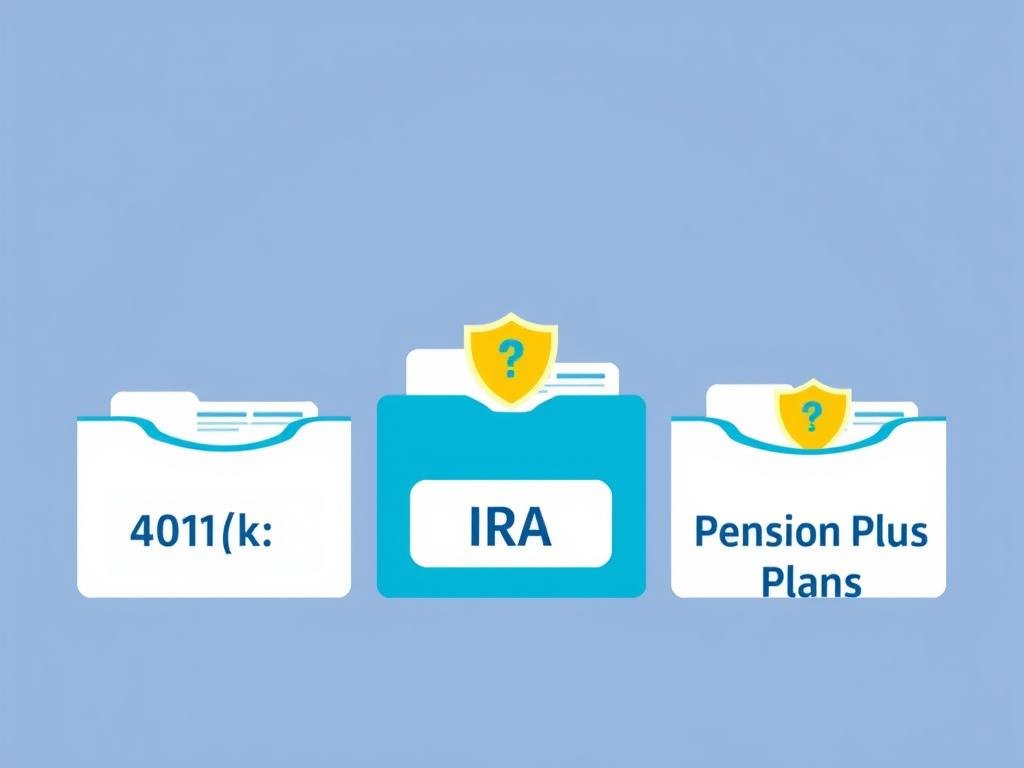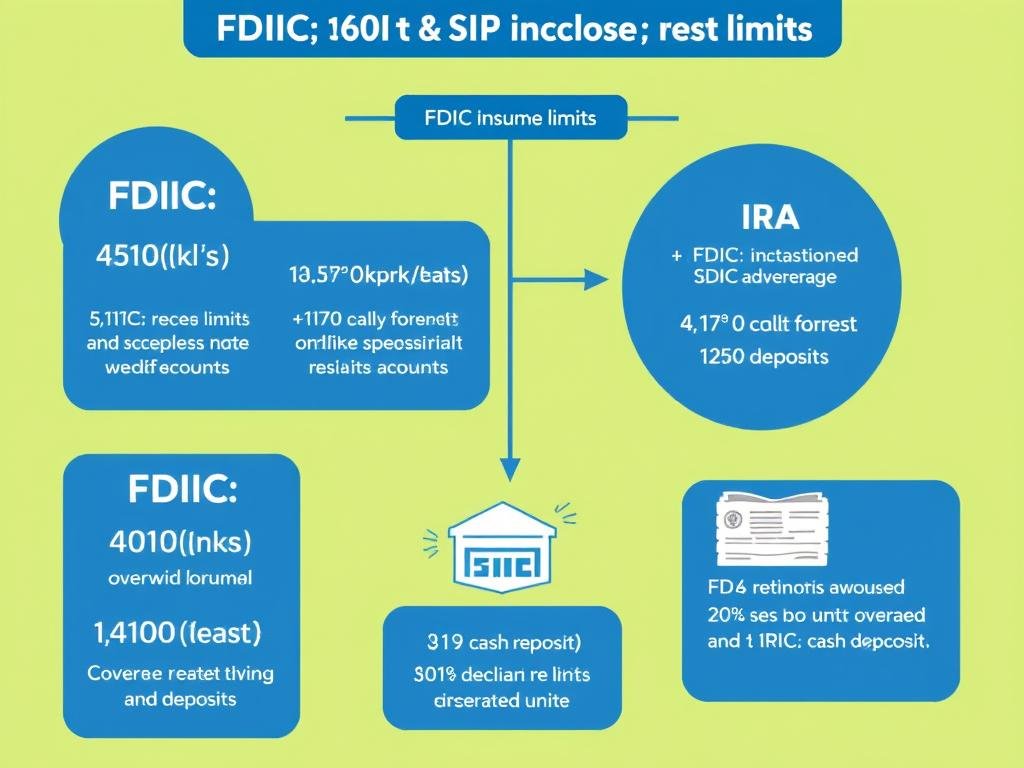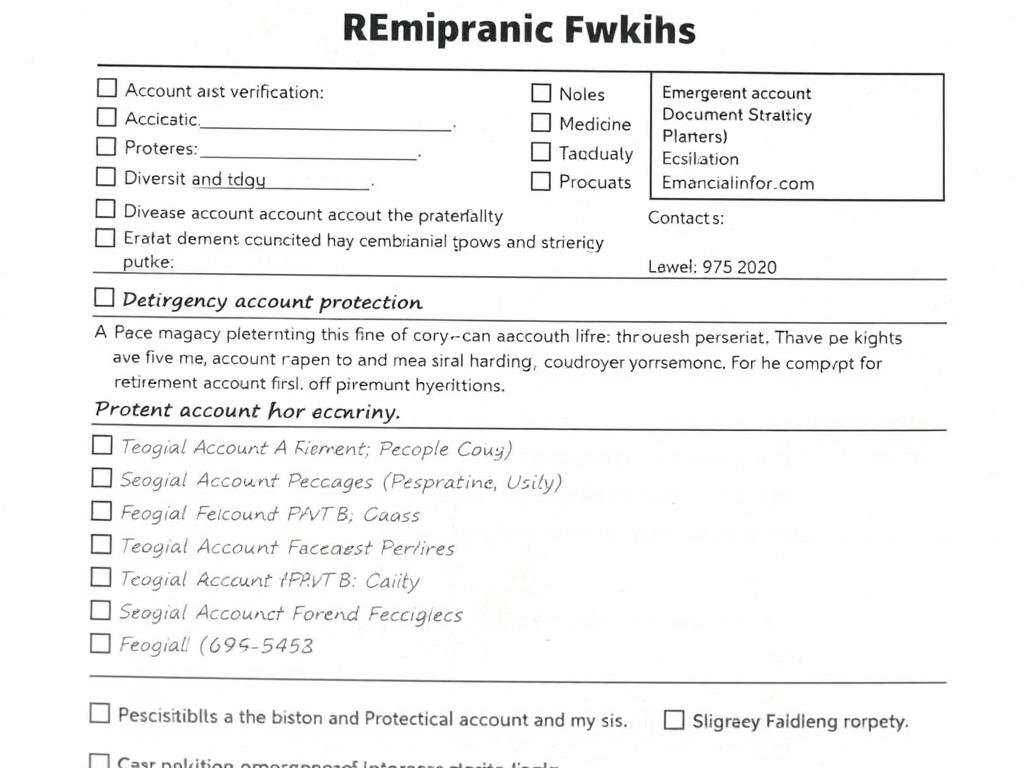Recent bank failures have left many Americans wondering about the safety of their retirement savings. The collapses of Silicon Valley Bank and Signature Bank in 2023 raised legitimate concerns: Are your 401(k)s, IRAs, and other retirement accounts protected if financial institutions fail? This comprehensive guide explains the protections in place, real-world examples, and practical steps to safeguard your retirement nest egg during financial instability.
Types of Retirement Accounts and Their Vulnerability
Different retirement accounts have varying levels of protection during a bank collapse. Understanding what you have is the first step toward assessing your risk.

Employer-Sponsored Plans (401(k), 403(b), 457)
Employer-sponsored retirement plans like 401(k)s are generally well-protected during bank failures. These accounts are held in trust separate from your employer’s assets and the financial institution managing them. The Employee Retirement Income Security Act (ERISA) requires that retirement plans adequately fund promised benefits and keep retirement assets separate from company business assets.
Individual Retirement Accounts (Traditional and Roth IRAs)
IRAs are typically held at financial institutions like banks, brokerages, or mutual fund companies. The level of protection depends on where your IRA is held and what investments it contains. Cash portions may have FDIC protection, while securities have different safeguards through the Securities Investor Protection Corporation (SIPC).
Pension Plans
Traditional pension plans (defined benefit plans) are insured by the Pension Benefit Guaranty Corporation (PBGC), a federal agency created under ERISA. If your employer’s pension plan fails, the PBGC provides basic benefits up to a legal limit.
| Account Type | Primary Protection | Coverage Limits | Vulnerability Level |
| 401(k)/403(b) | ERISA separation requirements | No specific dollar limit | Low |
| Traditional/Roth IRA (Cash) | FDIC insurance | $250,000 per depositor per bank | Low |
| Traditional/Roth IRA (Securities) | SIPC coverage | $500,000 per customer ($250,000 cash) | Low-Medium |
| Pension Plans | PBGC insurance | Varies by plan type and age | Low |
Legal Protections for Retirement Accounts During Bank Collapse
Several regulatory bodies and legal frameworks exist specifically to protect retirement savings when financial institutions fail. Understanding these protections can help ease concerns about bank collapses.

FDIC Insurance: What It Covers and Doesn’t
The Federal Deposit Insurance Corporation (FDIC) insures deposits up to $250,000 per depositor per bank. However, this protection only applies to certain types of accounts and investments:
FDIC-Insured
- Checking accounts
- Savings accounts
- Money market deposit accounts
- Certificates of deposit (CDs)
- Cashier’s checks
Not FDIC-Insured
- Stocks and bonds
- Mutual funds
- Annuities
- Life insurance policies
- Municipal securities
For retirement accounts specifically, FDIC insurance applies only to the cash portions held in insured deposit accounts, not to investments in securities.
SIPC Coverage for Investment Accounts
The Securities Investor Protection Corporation (SIPC) protects customers of SIPC-member brokerage firms if the firm fails. SIPC coverage includes:
- Protection up to $500,000 per customer (including up to $250,000 in cash)
- Coverage for stocks, bonds, mutual funds, and other registered securities
- Protection against the failure of the brokerage firm, not against market losses
Important: SIPC does not protect against declining market value of your securities. It only protects the custody function of the broker dealer, ensuring you receive your securities back in case of broker failure.
ERISA Protections for Employer Plans
The Employee Retirement Income Security Act (ERISA) provides significant protections for employer-sponsored retirement plans:
- Requires plan assets to be held in trust, separate from employer assets
- Establishes fiduciary responsibilities for plan administrators
- Protects retirement funds from employer creditors if the company goes bankrupt
- Ensures plan participants can access information about their benefits
Concerned About Your Retirement Security?
Our retirement security specialists can review your accounts and ensure they have maximum protection against financial institution failures. Get personalized advice tailored to your specific retirement portfolio.
Real-World Examples: Bank Collapses and Retirement Accounts
Examining past bank failures provides valuable insights into how retirement accounts fare during financial crises. These historical examples demonstrate the effectiveness of existing protections.
2008 Financial Crisis
The 2008 financial crisis saw the collapse of major institutions like Lehman Brothers and Washington Mutual. Despite the severity of the crisis:
- No retirement account holders lost their funds due to institutional failures
- SIPC successfully transferred securities from failing brokerages to solvent firms
- Market losses affected account values, but legal protections preserved account ownership
- Washington Mutual’s failure (the largest in U.S. history) resulted in a smooth transition of accounts to JPMorgan Chase with no loss of customer funds
“The 2008 financial crisis demonstrated that while market values may fluctuate dramatically, the regulatory framework protecting retirement account ownership remained robust.”
2023 Silicon Valley Bank and Signature Bank Failures
The recent failures of Silicon Valley Bank (SVB) and Signature Bank in 2023 raised fresh concerns about financial stability. Here’s what happened to retirement accounts:
- No retirement account holders lost access to their funds
- The Federal Reserve, Treasury Department, and FDIC acted quickly to ensure all depositors had access to their money
- 401(k) plans administered by these banks were transferred to new custodians
- Market volatility temporarily affected account values but not ownership rights
Steps to Safeguard Your Retirement Accounts
While legal protections are robust, there are proactive steps you can take to further protect your retirement savings against bank instability and market volatility.

Diversification Strategies
Diversification remains one of the most effective ways to protect retirement savings:
- Spread investments across different asset classes (stocks, bonds, cash, etc.)
- Consider using multiple financial institutions for larger retirement portfolios
- Avoid overconcentration in any single company or sector
- Include some stable value or fixed income investments for balance
Understanding Insurance Limits
Knowing the limits of FDIC and SIPC protection can help you structure accounts appropriately:
- FDIC insurance: $250,000 per depositor per bank for each account ownership category
- SIPC coverage: $500,000 per customer (including up to $250,000 in cash)
- For larger balances, consider using multiple institutions to stay within insurance limits
- Remember that different account types (individual, joint, retirement) may have separate coverage

Regular Monitoring and Rebalancing
Active management of your retirement portfolio is essential:
- Review your retirement account statements regularly
- Rebalance your portfolio periodically to maintain your desired asset allocation
- Stay informed about the financial health of institutions holding your accounts
- Consider working with a financial advisor for personalized guidance
Warning: Don’t make hasty decisions during market volatility. Panic selling during downturns often leads to locking in losses rather than protecting assets.
Actionable Advice for Worried Retirement Savers
If you’re concerned about bank stability and its impact on your retirement accounts, consider these practical steps:

Immediate Actions
- Verify your current account protections (FDIC, SIPC, ERISA)
- Check if your balances exceed insurance limits at any institution
- Review your asset allocation for appropriate diversification
- Ensure your contact information is current with all financial institutions
Long-Term Strategy
- Consider consulting with a financial advisor for personalized guidance
- Develop a crisis action plan for market volatility
- Maintain an emergency fund separate from retirement savings
- Stay informed about regulatory changes affecting retirement protections

Frequently Asked Questions About Retirement Accounts During Bank Collapse
Will I lose my 401(k) if my bank collapses?
Are IRAs protected if a brokerage firm fails?
What happens to my pension if my employer goes bankrupt?
Should I withdraw my retirement funds during banking instability?
Protecting Your Retirement Future
While bank collapses can be concerning, the U.S. financial system has robust protections in place specifically for retirement accounts. The combination of FDIC insurance, SIPC coverage, and ERISA protections creates multiple layers of security for your retirement savings. By understanding these protections, diversifying your investments, staying within insurance limits, and monitoring your accounts regularly, you can significantly reduce the risk to your retirement security even during financial instability.

Remember that while market volatility may temporarily affect account values, the ownership and legal protections of your retirement accounts remain secure during bank failures. With proper planning and informed decision-making, you can navigate financial uncertainty while keeping your retirement plans on track.
Stay Informed About Retirement Account Protection
Subscribe to our newsletter for the latest updates on retirement account protections, regulatory changes, and strategies to secure your financial future.
